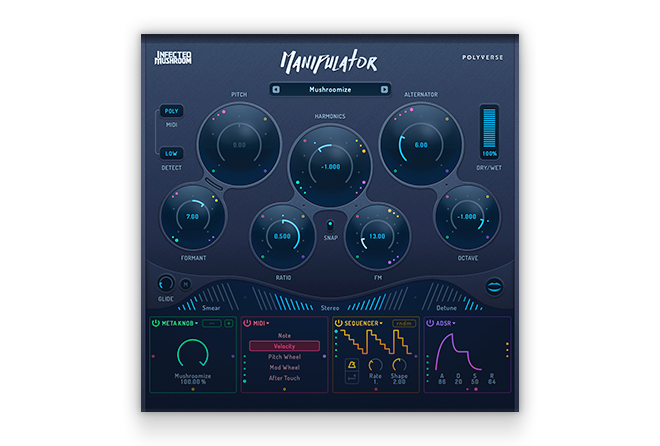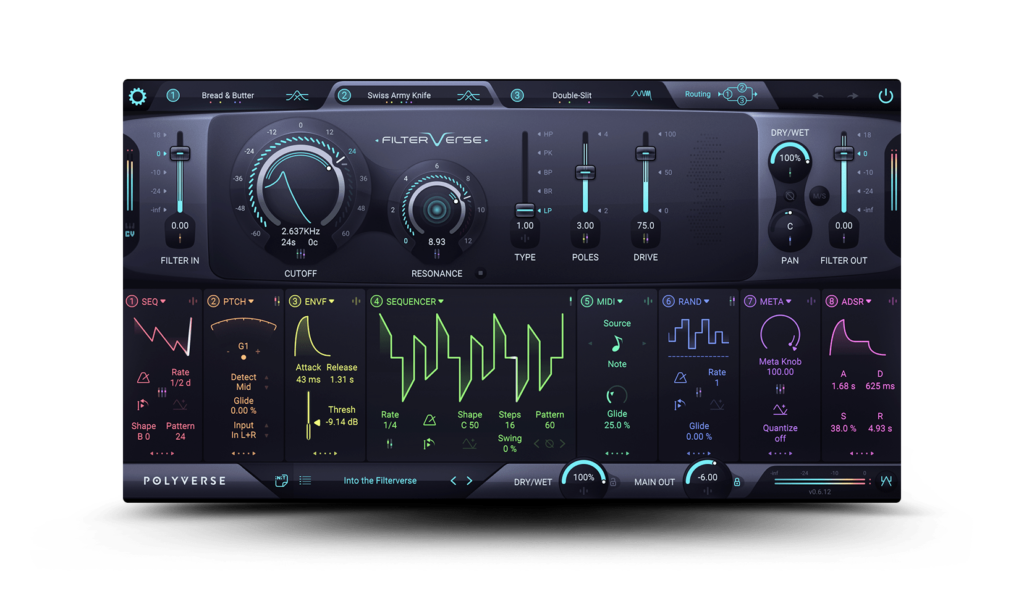BEARDYMAN
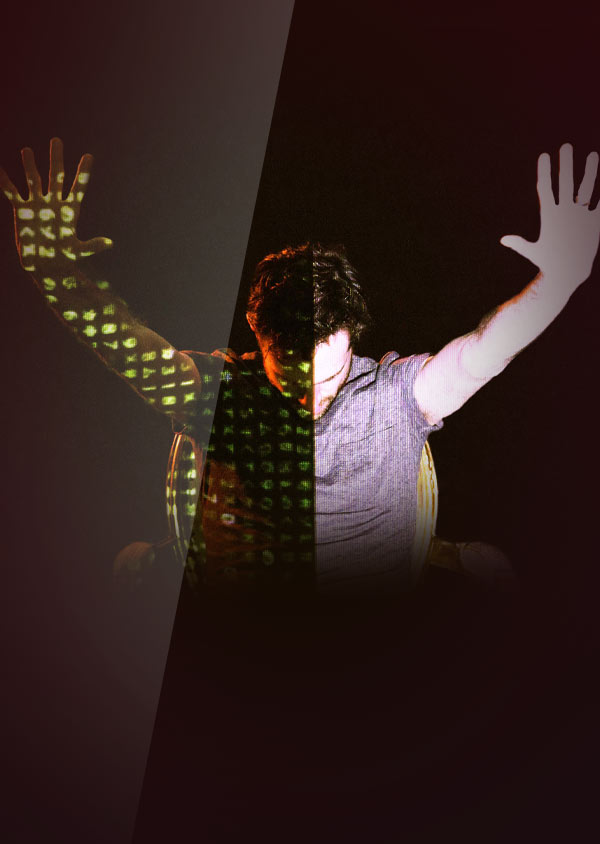
DARREN FOREMAN (BEARDYMAN)
Beatboxer. Loop artist. Music producer. DJ. Dev. Technology evangelist. Beardyman (Darren Foreman to his friends) is a true polymath of electronic music. Except that assigning him to that genre is a bit of an irony because the source of every sound in his tracks is as acoustic as it gets: his voice. Through a combination of looping and processing, Beardyman transforms himself into a kick drum, a snare, a string pad, a top loop, and whatever else the musical moment inspires. Casual listeners could scarcely believe he was not commanding an army of synths and samplers on such viral hits as “Monkey Jazz,” his TED presentation “The Polyphonic Me,” and ongoing live shows.
INTERVIEW WITH BEARDYMAN
As he prepared for a gig at the Dark Matter art installation in Berlin, Beardyman kindly spoke with Polyverse about how childhood experiments in beatboxing evolved into a singular art form and enviable career. He also explains the role Polyverse plug-ins have played in his creative process.

In your TED talk you demonstrated your signature: transforming your voice into different sounds, then creating an arrangement from those. How did you come to do this?
I started beatboxing when I was three. Most kids experiment with sounds when they’re very young. Once they start getting feedback from parents to define the accepted phonemes of their language, they curtail their experimentation. But I’ve always had the kind of brain that’s searching for the cracks in the obvious. I’m fixated on novelty, because I have what in modern parlance would be described as brutal ADD!
When I was in [grade] school, beatboxing wasn’t a thing yet. So, I’d hide it from people because they thought it was weird. And then when people did hear it, they’d be, like, have you got a drum kit in your face?
When I was a teenager, people started getting into it. There were early beatboxers like Killa Kela, Rahzel, and Kenny Muhammad. Even the Fat Boys before that. Rahzel had these amazing vocal tricks where he would sing and beatbox at the same time. I started to realize that people wanted this mad music that didn’t need to sound perfect. It just needed to get everyone in a good mood.
I just kept doing it, but always thinking, how close can I get to music that sounds like it would take months in a studio to perfect? That’s the journey I’ve been on ever since.
For looping and voice processing, do you prefer hardware or software?
I now own very little hardware, but I started with it because at the time, it was available and stable, and it was much easier to imagine plugging things together with MIDI boxes and audio I/O and this patchwork of what is now called DAW-less jamming stuff. When I started, computers were a whole Pandora’s box.
What was your first looper, or the first one that was important for performing?
The Looperlative, made by a guy named Bob Amdstadt in his garage in California. Bob is a really smart guy, a serious developer, and he wanted to resurrect and improve upon the version of the Gibson Echoplex [Not to be confused with the Maestro Echoplex, a tape delay. —Ed.] that had just gone out of production. The Echoplex was the first comprehensive looping system. You could do anything that you can imagine doing with an audio buffer. You could record into it, chop up bits of the loop, divide the length, double it, change the speed, alter the length to do polyrhythmic stuff … it was bananas
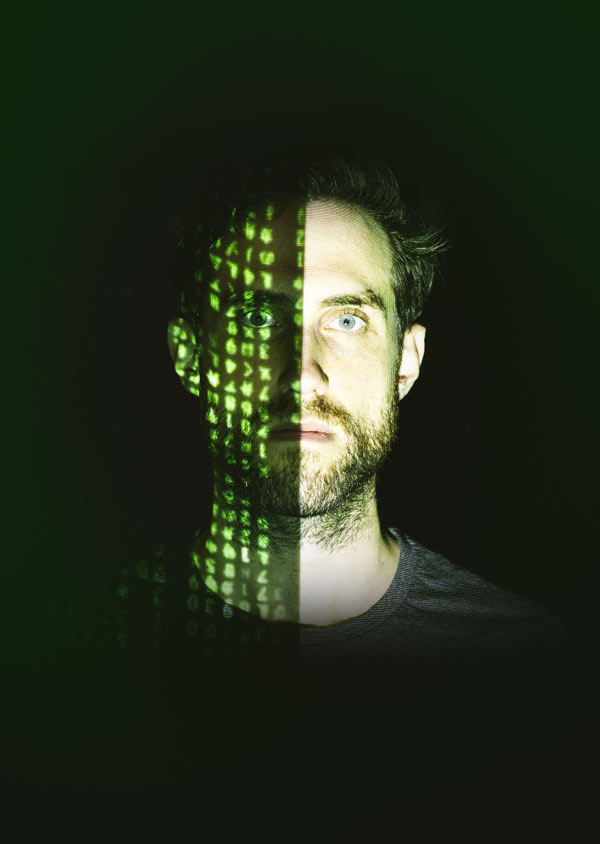
But as your fans know, you did move to software.
There came a point where I didn’t think hardware could accommodate what I needed to do. The Looperlative was solid, but this was at least 20 years ago, and it was a boutique item made by one guy with a six-month lead time. I gigged for a time on [Korg] Kaoss pads and similar things, but they tended to break under the way I was knocking them around — and cost about 400 quid to replace. Not to mention their looping functionality was limited. Today, I love the fact that software doesn’t weigh anything. While some things might not be supported by an OS as you go forward, they don’t physically break.
Can you describe your first explorations into looping and vocal processing with software, and how that evolved into the “Beardytron” rig seen in the TED talk?
This must have been 15 or more years ago, but I discovered a software looper called Mobius, which is still around today. Again, it was made by a single developer. Ed Sheeran even used it, and a version of it was built into his custom looper called Chewie.
It was an innovative system, but I couldn’t get it to record multitrack on the computers of the day. Nowadays, it would be able to. I then tried to get somebody to build me something in Max/MSP, which I now know is tremendously bad at performance DSP-related tasks. Finding experts in Max is rare because they tend to move on to C++ for audio dev work, which is the obvious place to go if you want efficiency and port-ability.

I was determined to get something up and running and realized it should be built in C++. Dave Gamble from DMG Audio configured that Beardytron you see in the TED talk. That took about a year to go from the planning stages to something giggable. And it never was perfectly stable, so it wasn’t a sustainable project.
That eventually led me back to basics: Ableton Live and third-party looping software. I moved to the Augustus Loop VST by Expert Sleepers, which was basic but very efficient. The looping functionality was less sophisticated, but I could iterate on it completely freely. It wound up being the best system I’d had up to then.
What looping tools are you using now?
I’ve replaced all the VSTs I’ve used for looping with Loopy Pro. It was created by a hugely respected audio dev named — believe it or not — Mike Tyson. I would say it’s definitively the best looping system and will continue to get better. I’ve been working with him for the last year to get what is currently an iOS and iPad OS app into a VST for use on computers.
Turning to the processing part of the equation, you must use a variety of effects plug-ins to turn your voice into all the different parts of an arrangement — because they all sound distinct.
Yes, indeed, and I suppose we should talk about Polyverse for a moment! [Laughs.]
“I’ve been using Manipulator for years”
I’ve been using Manipulator for years, which I think is the best performing, lowest-latency tool around for pitch manipulation. To get back to one of your original questions, the human voice is so malleable to begin with, but transforming it with Manipulator, I get a truly limitless range.
“I’ve put Filterverse into my live rig”
With Filterverse, it’s intriguing to think that you could take a sine wave, or my voice, or white noise, or anything, and use this audio wizardry to transform it into just about anything. Without even running it through a synth or a vocoder, just by filtering. You can create all the different formants. I’ve put Filterverse into my live rig and only scratched the surface, but I have plans to use it in broad ways. I’ve spent some exhilarating days playing with it, but currently it’s a “set it and forget it” sort of affair as I have yet to assign all the hardware controls for tweaking parameters and changing presets.
Beyond many types of filters, it also has a reverb, phaser, and the ability to put three filters or effects in a row.
I think the word “effects” downplays what it does, in fact. You could start with white noise and turn it into, say, a pretty convincing drum kit with one or maybe two instances of Filterverse. For the snare, you could use the sequencer to ping the cutoff on the 2 and the 4, then dial in some membrane resonation, some harmonicity, with the Robo Comb mode. I reckon you could do a mean dubstep bass, too.
How did you first become aware of Polyverse?
Well, I’ve known them for a few years. They’re great people, and what they’re doing under the hood in terms of DSP is next-level. If I had to say first, there was one time I had a mono guitar track I wanted to widen. Everything I tried, I would get phase issues when I summed the signal to mono to check it. I did a quick Google search, and Polyverse Wider came up, so I just tried it. I hadn’t needed this application before, but it fit the bill exactly — a stereo widener that doesn’t exhibit phase issues.
Something I like about a lot of their plug-ins is the modulation system, which I believe in Filterverse has the most sources yet. It’s like a pseudo modular synth. It almost makes me want to fake my own death so I can go live in a cave, not be bothered by anyone, and just make presets all day.
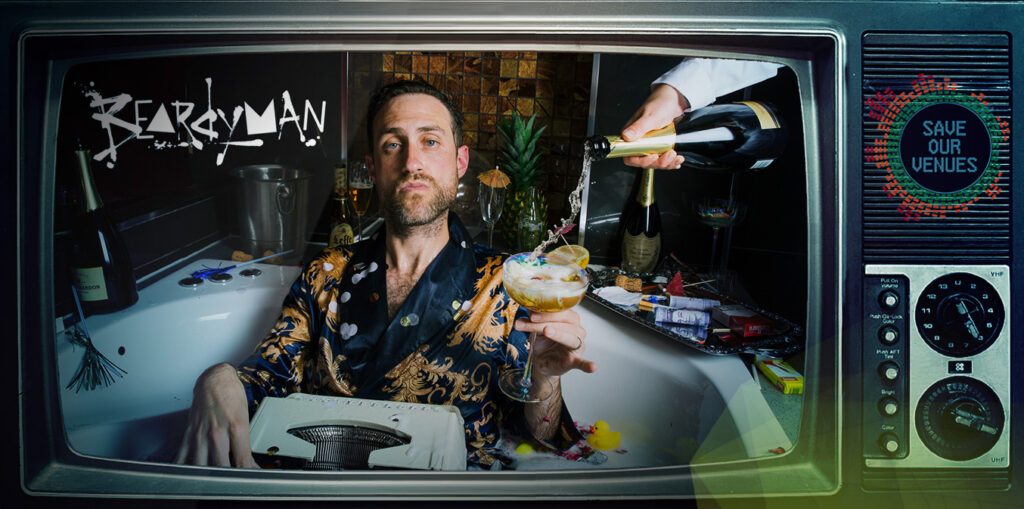
What’s your DAW or creation platform of choice?
I was a Logic person for years. I switched to Ableton Live because I loved that you could bend and stretch audio so easily. You could just casually throw together combinations of effects into chains. It feels like doing Lego with music.
Beardyman's Setup
What new projects are you excited about?
A developer and I are working busily on this control software, which I will tell you about in greater detail when it’s closer to a beta. Basically, you’ll be able to configure this incredibly complex control schema, which is tailored to your exact use case. One of the only things left innovate in music technology, I think, is the human interface — a front end that’s not just precise, but fun and intuitive.
So, it’s based in TouchOSC, which is a configurable multi-touch interface protocol. It looks like an unassuming iPad grid, but then you realize each little square has many different functions depending on how you move your finger, how many fingers you place on it, and the like. There’s no need for shift or other key modes. In fact, one of the things you could use this for is to call up and control, say, chains of Polyverse devices in Ableton Live.
There’s also a new vista about to open up with GPU audio. It’s brand new, but soon it will reach a stage where it will become more of an open standard. This will massively expand the amount of audio processing we have available.
The Polyphonic me
It sounds like you may become as formidable a developer as you are a musician.
It may well be that the next phase of my career is about being a vector for amazing music technologies. Because so many people have wondered how I create my music, I’d like to provide a gateway to the stuff I use, which could in turn be a gateway to great third-party plug-ins like Polyverse. The ultimate goal I’m envisioning between the control software, and all this is, you could produce an entire track with a single finger and your eyes closed. It’s just that mental.

